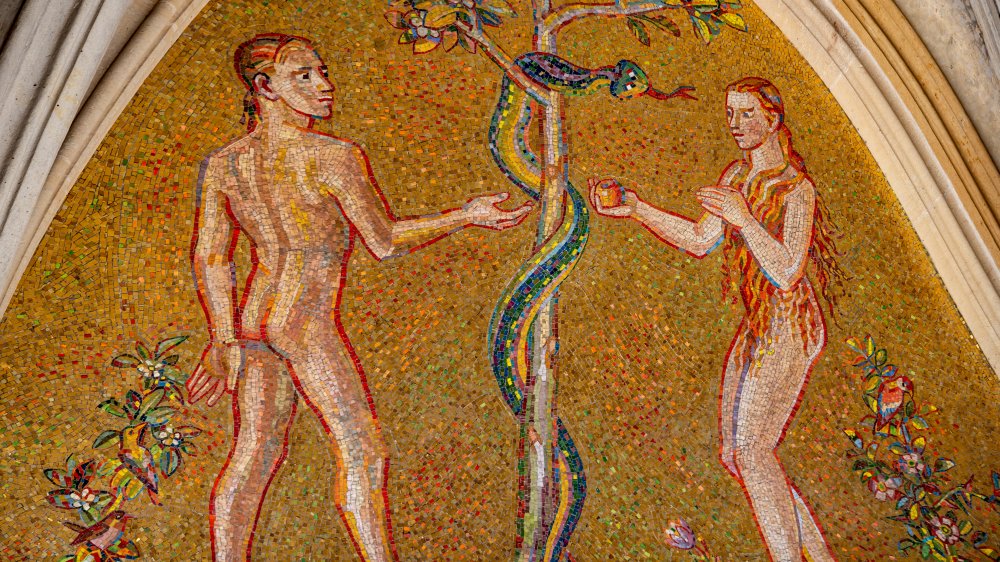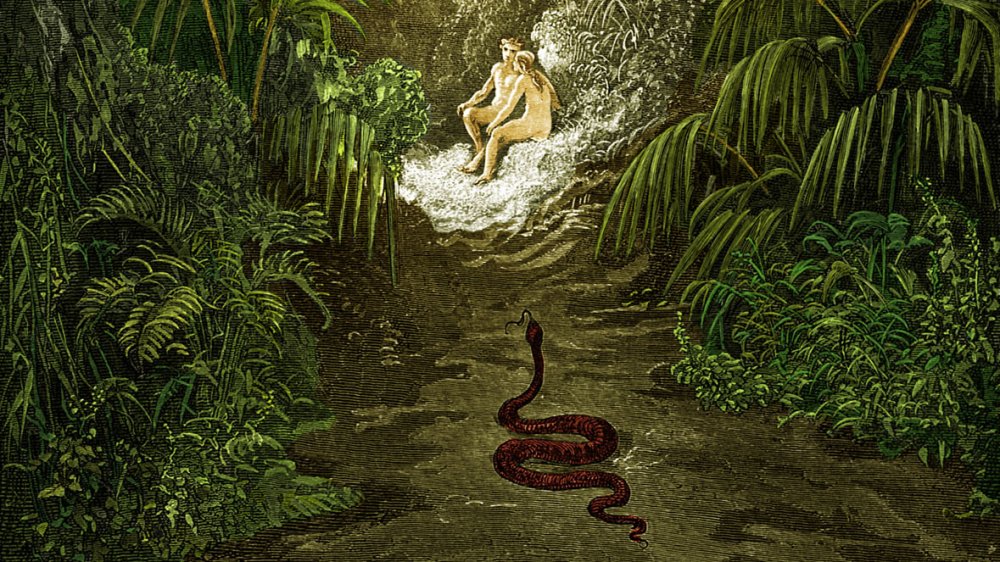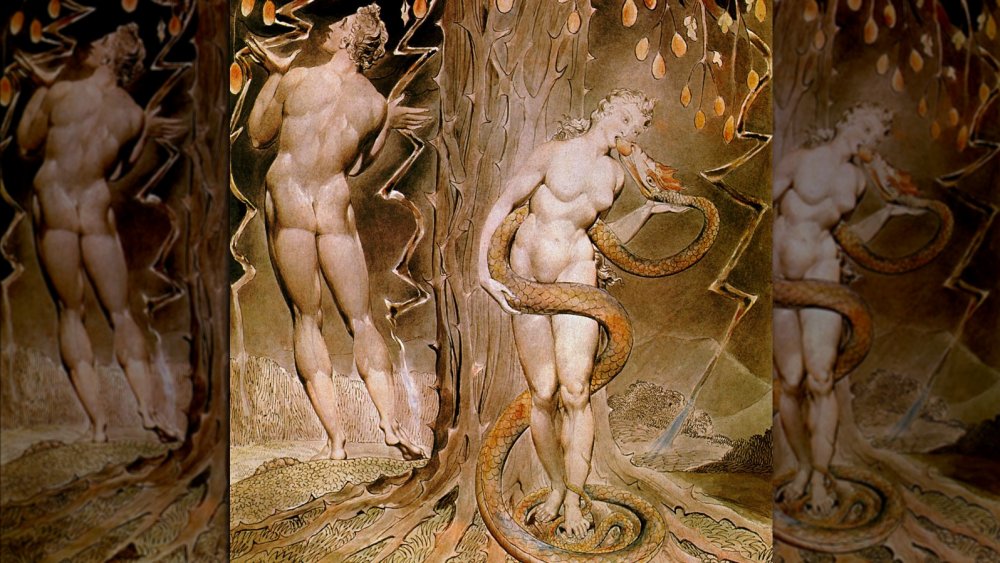The Truth About The Serpent In The Garden Of Eden
One of the most famous stories of all time is that of the Garden of Eden. The story is found at the beginning of the Hebrew Bible in the Book of Genesis. You probably know the gist of it already: God creates Adam, the first man, and Eve, the first woman; God tells the humans not to eat the fruit from the tree of knowledge of good and evil; a serpent tempts Eve into eating the fruit; Adam joins in; God banishes the humans from the garden of paradise.
It's a fascinating story about morality and obedience, and it centers around four key characters: God, Adam, Eve, and the serpent. To many, the serpent is a particularly interesting character, representing cunning and evil, standing in opposition to God's goodness and grace. Through one simple act of temptation, the serpent is able to condemn humanity to eternal suffering and struggle.
Since the writing of Genesis, that cunning serpent has appeared in many works of art and culture. As a result, you probably have many assumptions about it already — even if you've never read the Bible. As it turns out, many of your key assumptions are probably wrong. Let's examine why.
The serpent who tempted Eve wasn't actually Satan
If you listed everything you knew about the serpent in Genesis, one of the first things you'd probably mention is that the serpent was a physical manifestation of the Devil himself. Those familiar with the Genesis story typically believe that Satan took the form of a snake in order to trick Eve and Adam into sinning, thus forcing God to kick them out of paradise. But this is wrong. In reality, the authors of Genesis never intended the serpent to be Satan. How do we know? Satan wasn't yet an idea at the time Genesis was written.
Per the Biblical Archaeology Society, "Satan" didn't emerge as a concept until the second and first centuries BCE. Genesis was written several centuries before this; perhaps as early as 950 BCE, according to Britannica. This is a bit confusing, as the term "satan" does appear throughout the Hebrew Bible, but in ancient Hebrew, "satan" simply meant "adversary" or "accuser." Numerous characters in the Old Testament are referred to as "the satan," but it wasn't until later in the Jewish tradition that the idea of a powerful lord of darkness known as "Satan" was created.
When the idea of Satan did ultimately emerge, many Jews and Christians reinterpreted the story of the Garden of Eden. Under the new (now common) interpretation, the serpent in the Garden was Satan himself — even though this is never stated in Genesis.
The serpent in Genesis wasn't a snake ... at first
While this next fact isn't as theologically relevant as the first one, it's almost equally surprising. When you imagine Eve getting tempted into eating the forbidden fruit — which, by the way, was never identified as an apple — you probably picture the tempter as a snake coiled around a branch of the nearby tree. At least, this is how the scene is often depicted in art.
In reality, the "serpent" that tempted Eve was probably not a "snake" — at least, not the kind you're imagining. Per Aleteia, the Hebrew word used in Genesis was nahash. This translates broadly to "serpent," but was also used to describe powerful Biblical creatures like giant sea monsters. Thus, it's quite possible the serpent in the Garden was a terrifying creature more like a dragon than a snake, which would help explain why Adam and Eve felt so compelled to obey his commands.
Genesis is quite clear that the serpent only became a snake after being caught by God for tempting Eve. Per Genesis 3:14, God cursed the serpent, saying, "You will crawl on your belly and you will eat dust all the days of your life." God's curse makes it sound like the serpent must have been walking on legs up until that point, including when it tempted Eve. It's unfortunate that this detail is usually overlooked; wouldn't a legged serpent make for a cooler painting of the scene?


